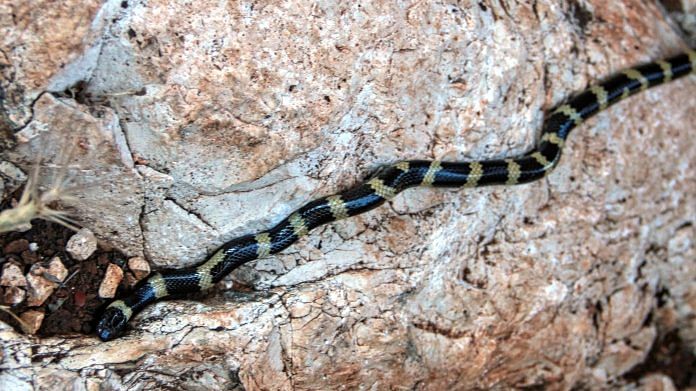New Delhi: A rare modern discovery by an international team of researchers has revealed a new family of snakes– the Micrelapidae. This snake family consists, so far, of three species. While one is found in Israel and the Palestinian Authority, Jordan, southern Syria, and Lebanon, the other two live in Kenya and Tanzania.
The study was published in the Journal of Molecular Phylogenetics and Evolution, authored by Sunandan Das, Faculty of Biological and Environmental Sciences, University of Helsinki, and her colleagues.
The research was designed to shed light on the evolution of the snake and put the three species into a new family based on a shared set of genetic characteristics that are not found in other snake families.
The researchers, hailing from Finland, the US, Belgium, Madagascar, Hong Kong, and Israel, used high-resolution magnetic imaging focused on snake skulls and DNA testing to identify this new family. They discovered that the Micrelaps had unique genomic elements, which were not found in any of the other groups.
“In addition to the DNA of Micrelaps, we sampled DNA from various snake groups to which they might have belonged. In this way we discovered in Micrelaps some unique genomic elements that were not found in any of the other groups,” Meiri said.
But, how did one species of Micrelapidae land in Israel while the other two are in East Africa? The researchers believe the snakes in question probably originated in Africa and spread northward through the Great Rift Valley, Haaretz reports.
In the paper titled ‘Ultraconserved elements-based phylogenomic systematics of the snake superfamily Elapoidea, with the description of a new Afro-Asian family,’ it states that the small snakes, which tend to have black and yellow rings, “diverged from the rest of the evolutionary tree of snakes about 50 million years ago.”
However, professor Shai Meiri of Tel Aviv University, who took part in the study, explains that while the discovery is not new to science, it is the existence of the family of snakes that had been unknown. Meiri explains that until recently, it was assumed that the various Micrelapidae belonged to other snake families.
The professor also contends that the Micrelapidae were, for several years, considered members of the largest snake family known as the Colubridae, but multiple DNA tests conducted over the last ten years proved the classification to be incorrect. “Snake researchers around the world have tried to discover which family these snakes do belong to, to no avail. In this study, we joined the scientific effort,” Meiri adds.
Micrelaps is a genus of rear-fanged venomous snakes in the family Atractaspididae, which is native to Africa and the Middle East. It has a small head that doesn’t look different from the neck, and its body is round with a short tail, The Jerusalem Post reports.
Micrelapidae belong to the superfamily of snakes called Elapoidea, which the researchers estimate branched off the snake family tree as much as 65 million years ago. They estimate that the Micrelapidae split off about 50 million years ago and evolved independently as a distinct and separate family.
The Elapid superfamily today is a very diverse group and is considered an example of ancient, rapid evolutionary radiation, the team writes.
Also read: UK appoints first woman chief scientific officer, infectious disease expert Angela McLean



